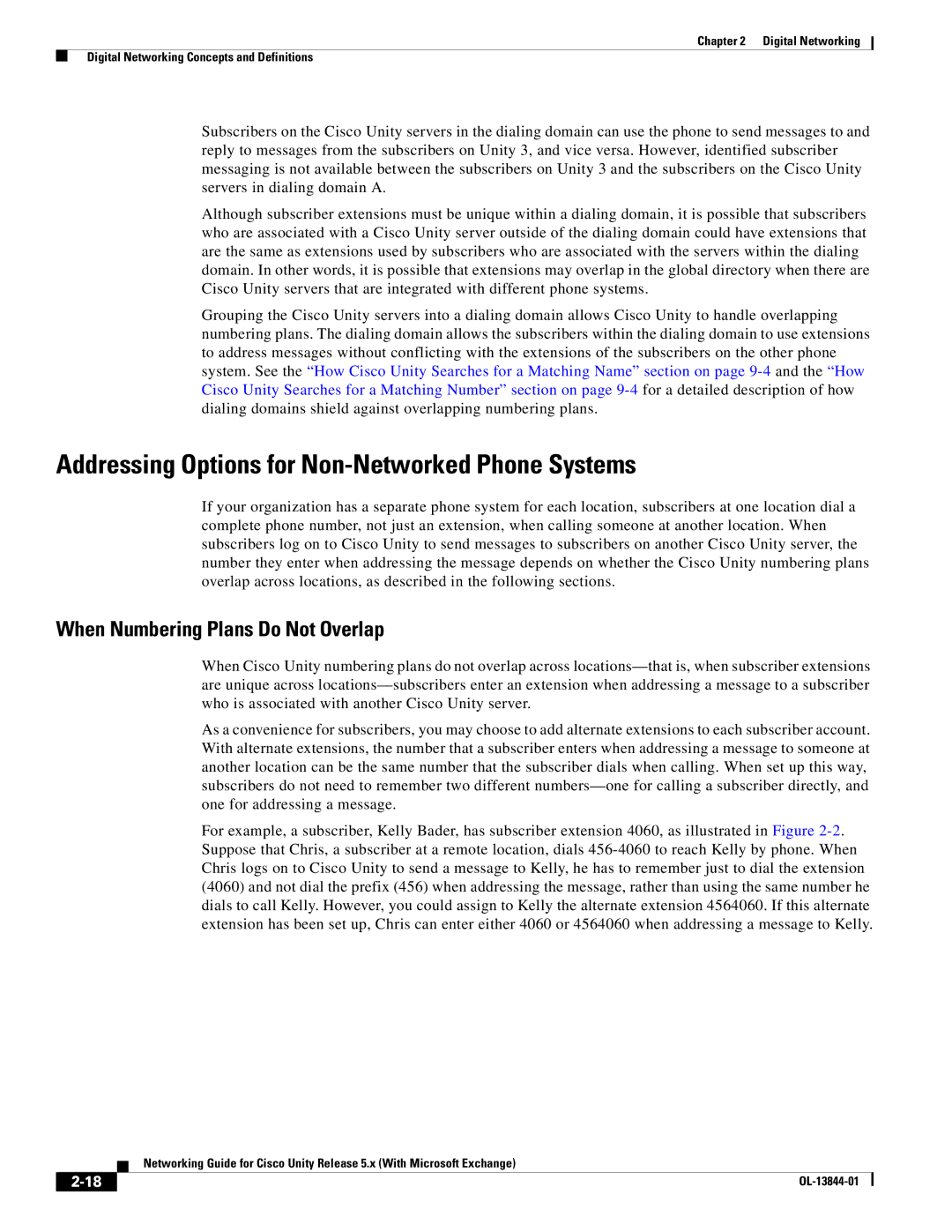
Chapter 2 Digital Networking
Digital Networking Concepts and Definitions
Subscribers on the Cisco Unity servers in the dialing domain can use the phone to send messages to and reply to messages from the subscribers on Unity 3, and vice versa. However, identified subscriber messaging is not available between the subscribers on Unity 3 and the subscribers on the Cisco Unity servers in dialing domain A.
Although subscriber extensions must be unique within a dialing domain, it is possible that subscribers who are associated with a Cisco Unity server outside of the dialing domain could have extensions that are the same as extensions used by subscribers who are associated with the servers within the dialing domain. In other words, it is possible that extensions may overlap in the global directory when there are Cisco Unity servers that are integrated with different phone systems.
Grouping the Cisco Unity servers into a dialing domain allows Cisco Unity to handle overlapping numbering plans. The dialing domain allows the subscribers within the dialing domain to use extensions to address messages without conflicting with the extensions of the subscribers on the other phone system. See the “How Cisco Unity Searches for a Matching Name” section on page
Addressing Options for Non-Networked Phone Systems
If your organization has a separate phone system for each location, subscribers at one location dial a complete phone number, not just an extension, when calling someone at another location. When subscribers log on to Cisco Unity to send messages to subscribers on another Cisco Unity server, the number they enter when addressing the message depends on whether the Cisco Unity numbering plans overlap across locations, as described in the following sections.
When Numbering Plans Do Not Overlap
When Cisco Unity numbering plans do not overlap across
As a convenience for subscribers, you may choose to add alternate extensions to each subscriber account. With alternate extensions, the number that a subscriber enters when addressing a message to someone at another location can be the same number that the subscriber dials when calling. When set up this way, subscribers do not need to remember two different
For example, a subscriber, Kelly Bader, has subscriber extension 4060, as illustrated in Figure
| Networking Guide for Cisco Unity Release 5.x (With Microsoft Exchange) |
|
